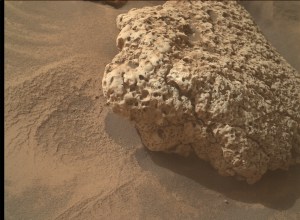Sols 4246-4247: Next Stop: Fairview Dome
Earth planning date: Monday, July 15, 2024 Summer is in full swing in the northern hemisphere here on Earth. Warmer temperatures and fair weather make for prime opportunities for road trips and enjoying the best of the outdoors. Summer is in full swing too for the southern hemisphere of Mars and Gale crater, where Curiosity […]

2 min read
Sols 4246-4247: Next Stop: Fairview Dome

Earth planning date: Monday, July 15, 2024
Summer is in full swing in the northern hemisphere here on Earth. Warmer temperatures and fair weather make for prime opportunities for road trips and enjoying the best of the outdoors. Summer is in full swing too for the southern hemisphere of Mars and Gale crater, where Curiosity is continuing its mini (make-your-own) road trip to “Fairview Dome.”
Recent exciting stops saw Curiosity enjoy “ice cream” and take a moment to “vug out” (imagination required as to what vuggin’ out could mean in the sense of a road trip!). The workspace Curiosity presented to the science team today did not leave many options for APXS and MAHLI. The team did ultimately decide on a suitable and compelling target to deploy Curiosity’s arm in the form of “Jack Main Canyon,” located just below and left of the apparently brighter and angular rock in the upper-left of the image.
Today’s plan kicked off with a lengthy DAN passive activity and imaging of the REMS UV sensor with MAHLI. APXS followed with a short measurement on Jack Main Canyon alongside usual imaging support from MAHLI. Morning measurements with APXS, referred to as touch-and-gos (or a hover-and-go in this case, since we did not actually touch Jack Main Canyon with APXS) have become less frequent recently as the summer season’s relatively warmer temperatures hinder APXS’s data quality. Also in the first sol of the plan, ChemCam’s laser analyzed a rock named “Budd Lake,” which was also captured by Mastcam. Mastcam additionally imaged “McGee Creek,” “Granite Park,” “Lamrack Col,” and conducted a sizable 49-image mosaic on “Red Devil Lake” to round out the bulk of the science planned today. Curiosity then completed a drive of about 24 meters (about 79 feet), which is expected to mark its arrival to Fairview Dome.
Written by Scott VanBommel, Planetary Scientist at Washington University
Share
Details
Related Terms
What's Your Reaction?



















.jpg?#)






































